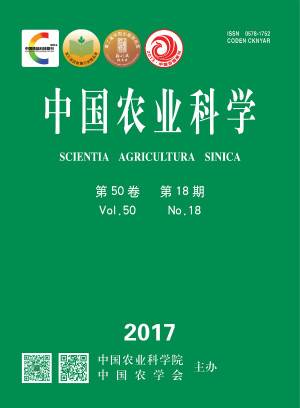-
Effects of Compound Natural Plant Preparation on Milk Withdrawal and Galactin in Dairy Cows
- SHEN LiuHong, XIAO JinBang, WU XiaoFeng, JIANG SiXun, JIANG Tao, DENG JunLiang, ZUO ZhiCai, YU ShuMin, CAO SuiZhong
-
Scientia Agricultura Sinica. 2017, 50(18):
3620-3630.
doi:10.3864/j.issn.0578-1752.2017.18.017
-
 Abstract
(
385 )
Abstract
(
385 )
 HTML
(
2 )
HTML
(
2 )
 PDF (441KB)
(
331
)
PDF (441KB)
(
331
)
 Save
Save
-
References |
Related Articles |
Metrics
【Objective】the objective of this study is to explore the impact of compound natural plant preparation on the milk withdrawal and serum insulin(INS), hydrocortisone(HC), growth hormone(GH) and insulin growth factor 1(TGF-1) levels in dairy cows.【Method】A total of 150 Chinese Holstein cows, weighing (582±41) kg, pregnant with 2-4 fetuses, and fed in a large-scale dairy farm in Sichuan Province from January 2016 to June 2016, were used in the present study. Eighty healthy cows with normal milk and udder that in late pregnancy and gave (15.42±0.71) kg milk per day were chosen. The cows were randomly divided into four groups: groups A, B, C and D, with 20 of them in each group. Stop dairy cows’ milk by gradually dry milk method and the day when cows gave less milk was recorded as 0 d. Group A was a control group, did not feed compound natural plant preparation and the groups B, C and D were fed 400g, 500g, 600g compound natural plant preparation, respectively, at 8.00 am from 1 d to the day of dry milk completely. Compound natural plant preparation comprises fructus hordei germinatus, mirabilite, rhizoma cimicifugae, bupleurum, rhizoma cyperi, coix seed, silkworm slough, rhizome atratylodis, scutellaria baicalensis, rhizome anemarrhenae, caulis perllae, semen euryales, schisandra chinensis, dandelion, licorice and so on. The cows’ venous blood was collected from tail on the day 0, 1, 3, 5, 7, 9 and 11, the samples were placed in the centrifuge tubes without anticoagulant at room temperature for 1h. The suspension was centrifuged at 352 × g for 10 min and then put into the refrigerator at -20℃. ELISA was used to evaluate the expression levels of serum INS, HC and IGF-I and the daily milk production was recorded.【Result】Groups A, B, C and D returned milk on the 11 d, 7 d, 5 d and 5 d respectively. The expression levels of serum IGF-1 and HC were declining in all 4 groups and the decline trend of the control group was slower than compound natural plant preparation groups. The expression levels of serum IGF-1, HC and GH were raised after the period of milk withdrawal, the upward trend of the expression levels of serum INS in the control group was slower than compound natural plant preparation groups. From the day 0 to the 1, the expression levels of serum HC, IGF-1 and GH had no significant difference (P>0.05). From the day 3 to the day7, the expression levels of serum HC, GH and IGF-1 in group A were highly and significantly higher than those of groups B, C and D (P<0.01), while the expression level of INS in group A was highly significant loser than those of groups B, C and D (P<0.01). On the day 9, the expression levels of serum HC in groups A and D were significantly higher than that of group C (P<0.05), the expression levels of serum GH and IGF-1 in groups A and B were highly and significantly lower than those of groups C and D (P<0.01), the expression levels of serum INS in group A was highly and significantly lower than that of groups B, C and D (P<0.01). On the day 11, the expression levels of serum HC, GH and IGF-1 in group A were highly significantly lower than those of groups B, C and D (P<0.01), the expression levels of serum INS in group A was highly significant lower than that of groups B and C (P<0.01) and significantly lower than that of group D (P<0.05). The expression levels of serum IGF-1, GH, HC and INS had no significant difference between group C and D during the period of milk withdrawal (P>0.05). During the period of milk withdrawal, there were significant positive correlations among milk production, HC, GH and IGF-1 (P<0.01) and there was a significant negative correlation between INS and milk production, HC, GH, IGF-1 (P<0.01).【Conclusion】 Compound natural plant preparation can help cows milk withdrawal significantly, feeding 500g·d-1 can shorten the period of milk withdrawal to 5 days can make the best effect on milk withdrawal. The expression levels of serum INS, HC, IGF-1 and milk production had a highly significant correlation. IGF-1 GH and HC are negative regulation factors of milk withdrawal, while INS is a positive regulation factor.









